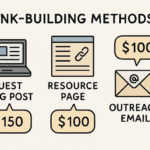Securing financial freedom is something many people strive for, but the journey to get there isn’t always straightforward. It requires intentional action and smart financial decisions that can lead to long-term stability and wealth. One powerful strategy to achieve financial independence is the Triple R Strategy: Relocate, Rebudget, and Reinvest. This approach focuses on making key changes in your living situation, reassessing your budget, and growing your wealth through strategic investments. In this post, we’ll dive into each part of the Triple R Strategy, providing insights and tips that can help you take control of your financial future.
Moving Tips: Making Relocation Work for You
When it comes to securing financial freedom, relocating can play a huge role. It’s more than just a change of scenery—it can drastically reduce living expenses, open up new career opportunities, and provide a better environment to grow your finances. But how do you know if relocation is right for you? And what steps should you take to ensure a smooth transition?
Assessing the Need to Relocate
Relocating isn’t something to be taken lightly. It’s a significant change that can affect many aspects of your life, from your daily routine to your financial situation. But when done strategically, moving can open up new opportunities. For example, some areas have a much lower cost of living, which could free up funds to save, invest, or pay off debt. Alternatively, relocating to an area with better job prospects or opportunities for career advancement can boost your earning potential. Relocating to a new city or state may also offer tax benefits, which could make a substantial difference in your overall finances.
How to Choose the Right Location
Choosing the right place to move is crucial. This decision isn’t just about finding a place you like—it’s about finding a location that supports your financial goals. Start by considering the cost of living in different cities or regions. Consider housing prices, transportation costs, and the cost of basic goods and services. Also, research job markets to ensure you can find work that matches your skills and income expectations. Other factors, like state income taxes, healthcare options, and general lifestyle, can also impact your financial situation.
When considering relocation, take into account your personal and professional goals. The perfect city for one person may not be right for you. Whether it’s a smaller town with lower expenses or a big city with plenty of job opportunities, make sure the location aligns with your vision for the future.
Tips for a Smooth Move
Once you’ve chosen the right location, it’s time to plan your move. Here are a few tips to help ensure the process is efficient and cost-effective:
- Plan Ahead: Start organizing your move as early as possible to avoid last-minute stress. Create a moving timeline and checklist to stay on track.
- Downsize: A move is a great opportunity to get rid of items you no longer need. Sell, donate, or recycle things that will only take up space in your new home.
- Budget for the Move: Moving expenses can add up quickly, so be sure to budget for items such as movers, packing materials, travel costs, and utility setup fees.
- Hire Movers Wisely: If you decide to partner with a long-distance moving company, get multiple quotes and check reviews to ensure you’re getting a good deal. If you’re moving on a budget, consider doing it yourself with a few friends and family members to save on costs.
Maximizing the Benefits of Relocation
Once you’ve successfully relocated, it’s time to capitalize on the benefits. Use your new, lower-cost living situation to save more money, pay off debt, or build an emergency fund. If you moved for a better job, take full advantage of any career opportunities to increase your earning potential. Relocation isn’t just about changing your environment; it’s about transforming your financial trajectory.
Rebudget: Redefining Your Financial Priorities
After relocating, it’s essential to rebudget your finances to ensure you’re on the path to financial freedom. Moving to a new location often brings changes in income, expenses, and lifestyle. These shifts provide an excellent opportunity to reassess your financial situation and prioritize your spending.
The Power of a New Budget
A fresh start in a new location often requires a new approach to budgeting. Creating a budget that aligns with your new lifestyle is critical to managing your money effectively. It’s an essential tool for taking control of your finances and tracking your progress toward financial goals.
Start by tracking your income and expenses. This includes understanding your monthly income, including any new job or business earnings, and breaking down your expenses—rent or mortgage, utilities, groceries, transportation, insurance, and discretionary spending. Ensure your budget accounts for the lower living expenses in your new location. This could give you more room to focus on saving, investing, and paying off debt.
Steps to Create an Effective Budget
To create a budget that works for you, follow these steps:
- Track Your Spending: Record all your income and expenses for at least one month. This will help you see where your money is going.
- Cut Unnecessary Costs: Identify areas where you can cut back. This might include eating out less, cancelling subscriptions, or finding cheaper alternatives for regular expenses.
- Set up an Emergency Fund: An emergency fund is essential for maintaining financial stability. Aim to save 3-6 months’ worth of living expenses.
- Set Financial Goals: Once you have a clear picture of your finances, set specific, achievable goals—whether it’s saving for a down payment, building an investment portfolio, or paying off debt.
Using Technology to Stay on Track
In today’s digital world, numerous apps and tools are available to help you stick to your budget. Apps like Mint, YNAB (You Need a Budget), and EveryDollar can help track your spending and ensure you stay on top of your financial goals. Use these tools to set reminders and track your progress toward savings and investment targets.
Read Also: 5 Mistakes to Avoid When You Compare Insurance in Singapore Online
Reinvest: Making Your Money Work for You
Once you’ve relocated and set a new budget, the next step in securing your financial freedom is reinvesting. Reinvesting your money is essential to growing your wealth and achieving long-term financial goals.
Understanding the Importance of Reinvesting
Reinvesting allows your money to grow exponentially. Instead of letting your savings sit idle, reinvesting helps your money work harder for you by generating returns. This strategy is key to building passive income and securing financial independence.
Reinvestment doesn’t just mean putting money into high-risk ventures; it’s about creating a diversified portfolio that offers both growth and security. From the stock market to real estate, there are several ways to make your money work for you.
Reinvestment Strategies
Here are a few common strategies for reinvesting:
- Stock Market Investments: One of the most popular ways to reinvest is by buying stocks or mutual funds. The stock market has historically provided substantial returns over the long term, though it does carry some risk.
- Real Estate: Investing in real estate—whether through rental properties, flipping houses, or REITs (Real Estate Investment Trusts)—can offer both immediate income and long-term appreciation.
- Retirement Accounts: Contributing to retirement accounts like 401(k)s or IRAs allows your money to grow tax-free or tax-deferred. This is a great way to prepare for the future while securing your current financial position.
Building Passive Income Streams
Reinvesting also includes building passive income streams. This could come from investments in dividend-paying stocks, rental properties, or even side hustles. By diversifying your income sources, you reduce the financial risk and increase your chances of financial security.
Minimizing Risk while Maximizing Returns
While it’s tempting to seek high-return investments, it’s crucial to maintain a balanced approach. Diversify your investments across different asset classes to reduce risk. Consult with financial advisors or use automated investment platforms like robo-advisors to ensure your investment strategy aligns with your financial goals.
How the Triple R Strategy Supports Financial Freedom
The Triple R Strategy—Relocate, Rebudget, and Reinvest—creates a powerful foundation for achieving financial freedom. By making intentional choices about where you live, how you manage your money, and how you invest, you can create a sustainable path toward wealth.
Each of these steps plays a critical role in freeing up resources, maximizing earnings, and growing your wealth. Whether you relocate to a more affordable city, rebudget to cut unnecessary spending, or reinvest in growth opportunities, each part of the strategy brings you closer to financial independence.
Conclusion
The Triple R Strategy is more than just a financial plan—it’s a roadmap for achieving long-term freedom and security. Relocate to a cost-effective or opportunity-rich location, rebudget to align with your new situation, and reinvest your savings wisely to grow your wealth. These three steps can create a strong foundation for lasting financial independence. Start today, and take control of your financial future with the Triple R Strategy.
You May Also Like: Smart Habits for Managing Short-Term Debts



















